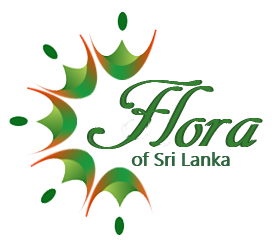.jpg)

Shrubs or small trees, 2—4.5 m tall, much branched; bark dark brown, rough, lenticellate branches with deciduous bracts at the base. Leaves alternate, obovate or cuneate-obovate, 1.4—4.2 (—5.2)) x 0.7—l.9 (—2.2) cm simple, apex rounded or very obtuse, emarginate, entire, slightly recurved at base, hardly shining above, glaucous brown beneath; veins reticulate, anastomosing, midrib prominent beneath; petioles 3—7 mm long; stipules triangular, 1.5—2 mm long, finely serrate, persistent. Flowers white or greenish-white, scented, l—4 in axillary fascicles, dimorphous, c. 1 cm across; peduncles c. 2 mm long; pedicels 5—8 mm long, thickened below the calyx. Calyx campanulate, persistent, glabrous; lobes 5, ovate or triangular, 2 x 2 mm, acute. Petals 5, oblong, spreading, ligulate; ligules to 2 mm long. Stamens 10; staminal tube c. 2 mm long; filaments 1.5—1.8 mm long, subequal; anthers basifixed, dehiscing longitudinally. Ovary ellipsoid or oblong, 2 mm long, 10-ribbed, 1—3-celled; ovule 1, pendulous; styles 3, connate for nearly whole length; stigmas clavate. Drupes cylindric or oblong, straight, 9—10 x 3—4 mm, furrowed, green, becoming blood red or scarlet when ripe, tipped above with persistent styles and subtended below by persistent calyx and filaments, 1-seeded. (FOC)
.jpg)
.jpg)
.jpg)
.jpg)
.jpg)
.jpg)
.jpg)
.jpg)
.jpg)
.jpg)
.jpg)
.jpg)
.jpg)
.jpg)
.jpg)
.jpg)
.jpg)
.jpg)
.jpg)
.jpg)
.jpg)
.jpg)
.jpg)
.jpg)
.jpg)
.jpg)
